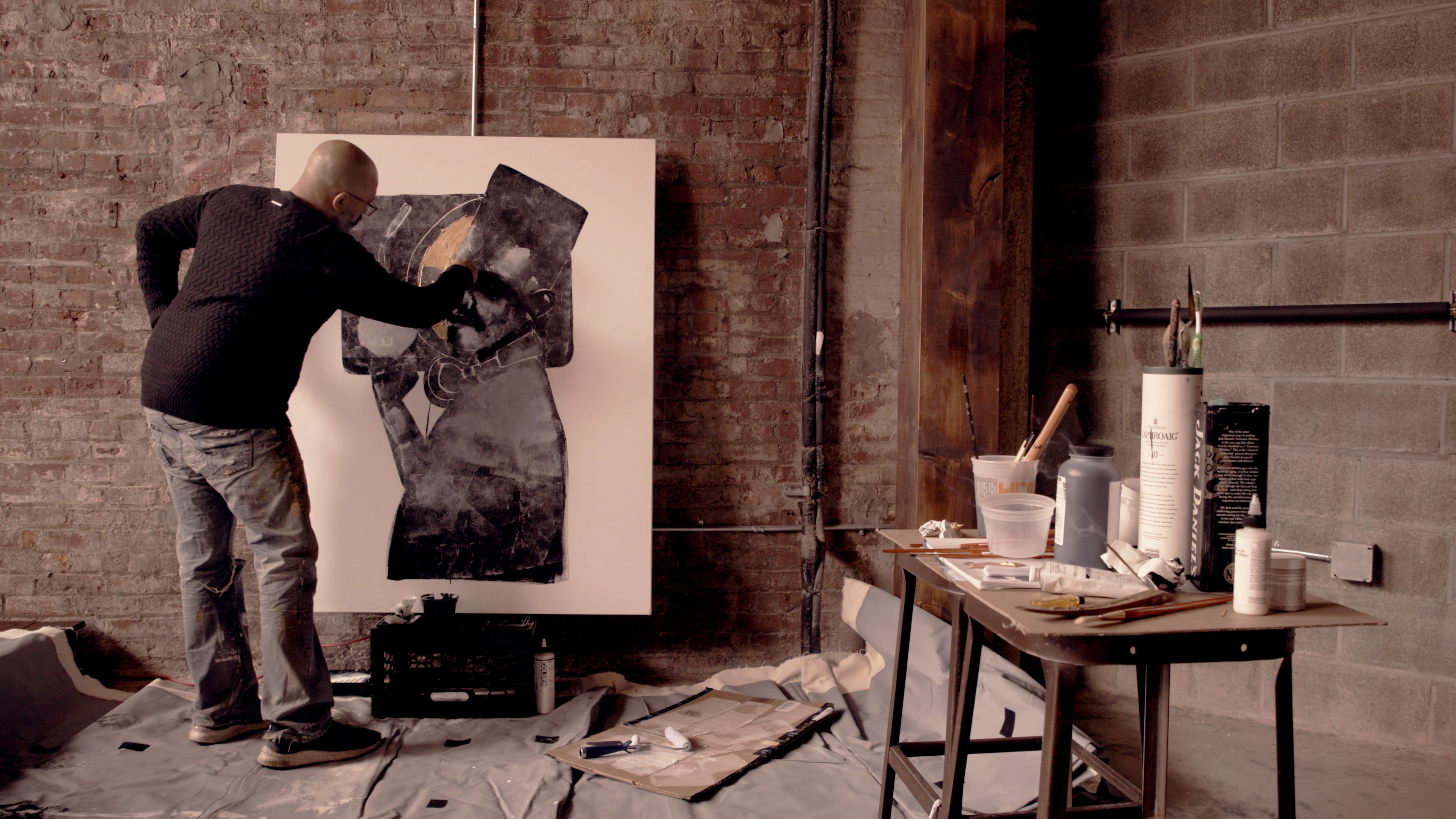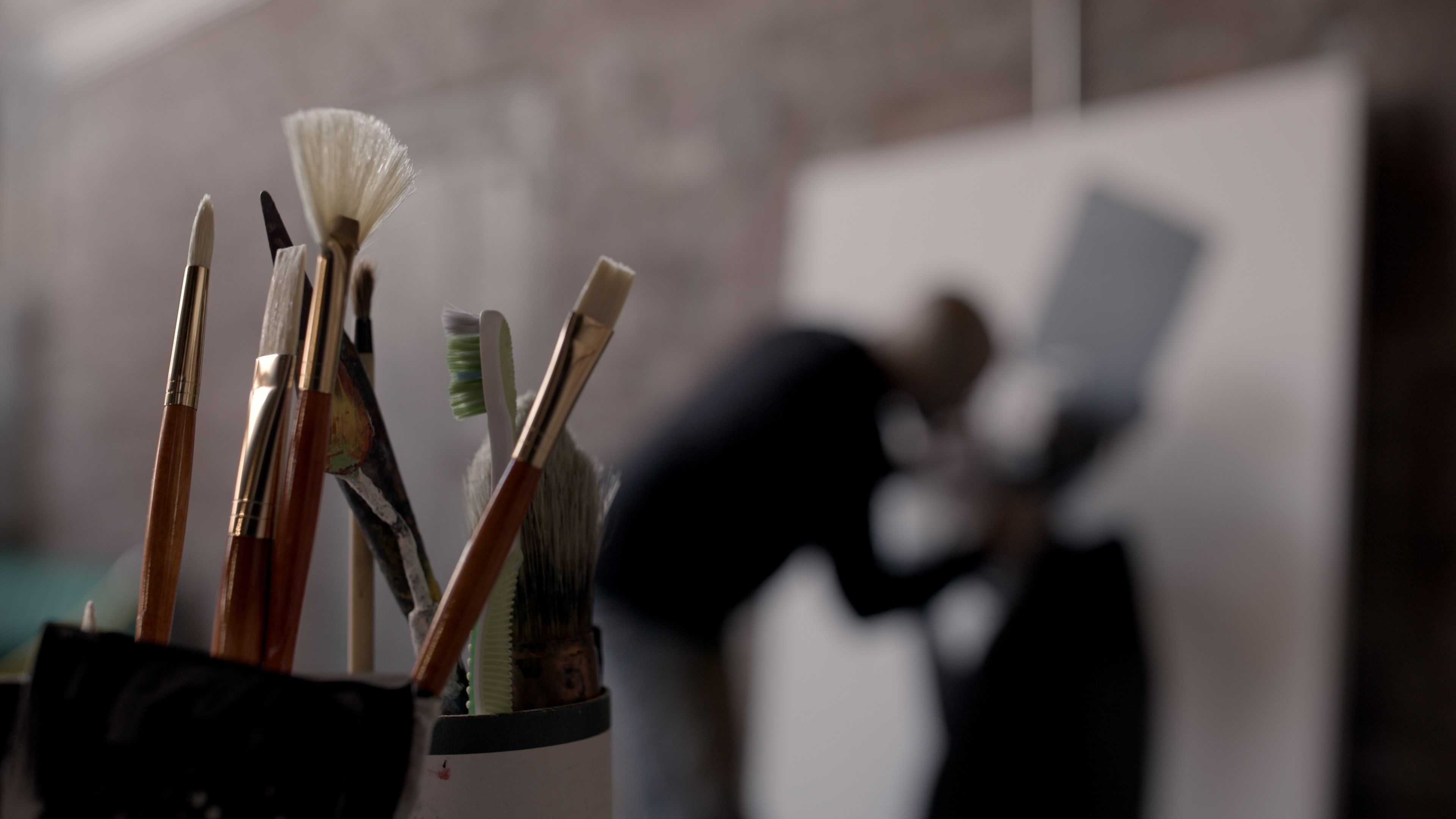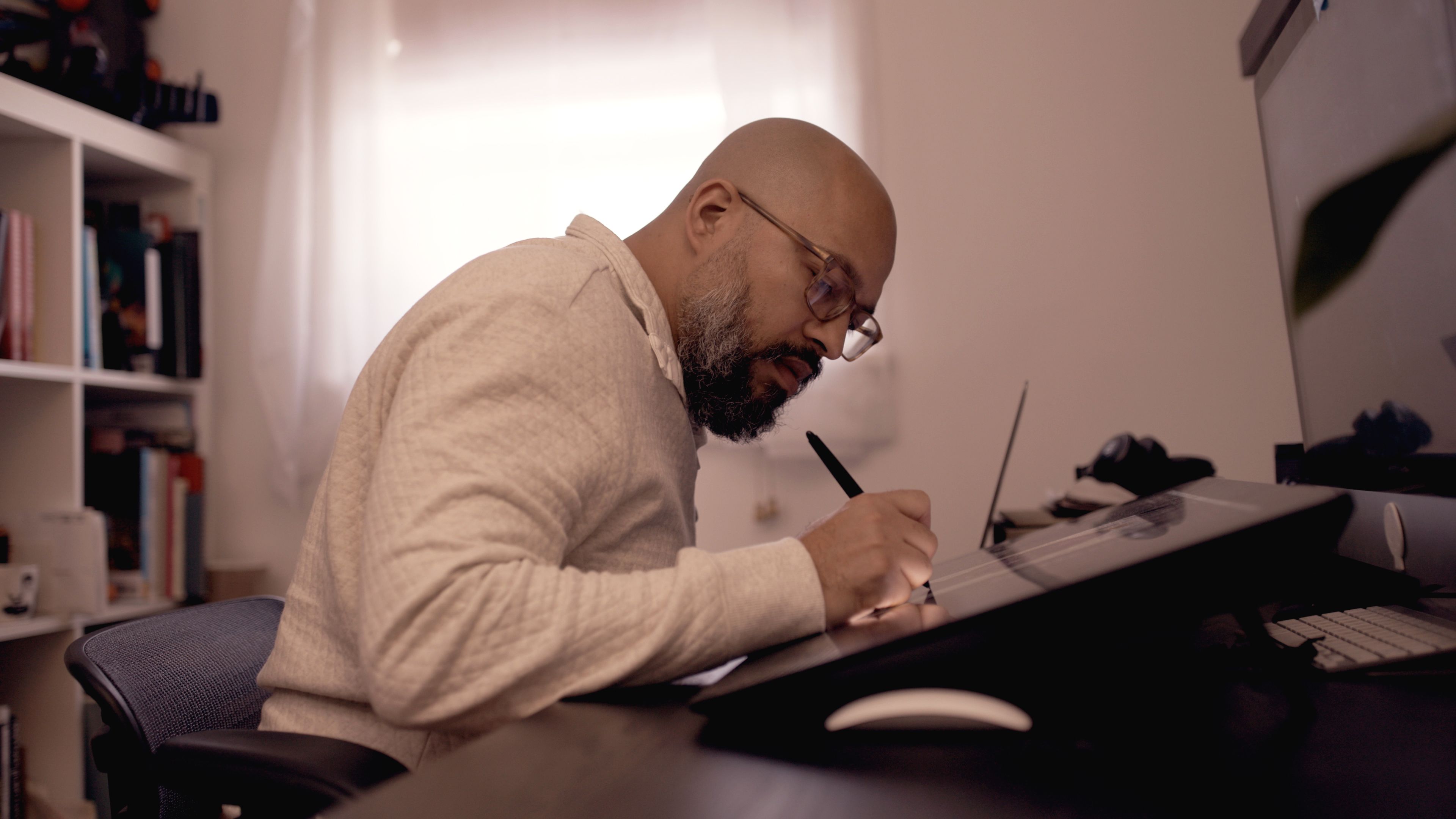Digital discipline meets creative success
David Cooper, an illustrator, painter, and master of efficiency, shares how keeping his creative projects organized in an online ecosystem enables his client and personal work.

“I have to stay super focused and efficient with my time because I have these little windows, these pockets, that I can fit work in. Dropbox has helped me create this ecosystem to be as efficient as possible.”

Organization and efficiency are keys to success
New York City-based multimedia artist David Cooper has shared his signature brushstroke with the concrete walls of Brooklyn and Miami. He’s illustrated children’s books (including Kevin Hart’s bestselling Marcus children’s series) and he’s worked as a photo director for national magazines. He juggles all that—and a family—by staying organized and connected to clients with Dropbox. “I have to stay super focused and efficient with my time because I have these little windows, these pockets, that I can fit work in,” says Cooper. “Dropbox has helped me create this ecosystem to be as efficient as possible.”
Here’s how Cooper manages and organizes his creative work:
“It’s important for me to have a system as simple as Dropbox because I am not a technician. They’ve taken away technical issues so I can focus on the creative stuff, which is the fun stuff.”
David CooperArtistAccess, organize and deliver
Cooper’s creative process often starts out with digital sketches, which he loads onto Dropbox. From there, he knows he can continue to work on the most up-to-date files at his laptop, on his Cintiq (a special tablet for illustrators), or even on his phone, without worrying about version history. “It’s really helpful to have access to everything whenever or wherever I am. I love that,” he says.
Cooper then relies on an organized folder structure to categorize his work by project and stage—a system he finds key to juggling multiple clients and artistic disciplines at once. “I have folders for sketches, finals, and working files, which makes it much easier to go in and find what I need.”
Cooper often presents two to three different sketch options to clients. After he uses Dropbox Transfer to submit rounds to the client, he can then either file an unused version away for another project, or clone the approved creative and get started on the next round of revisions. Once the client approves a design, he creates a folder for final files and sends them off once again with Dropbox Transfer.

Inspiration at the ready
“I keep a record of all my sketches,” Cooper says. “If a client doesn’t end up choosing one, that doesn’t mean the idea has to die there. There are nice little gems in those sketches, and I can always take an idea and rework it into something completely different.”
When Cooper is hunting around for inspiration, he often opens up a folder with sketches on Dropbox to find a thumbnail he likes, blows it up to a readable size on his iPad Pro, and then traces over it digitally, clarifying the lines and the composition. “I’ll keep refining it until I have a sketch that works, and from there, I can print it out, project it onto a canvas, and start drawing it out.”
“It’s important for me to have a system as simple as Dropbox because I am not a technician,” says Cooper. “They’ve taken away technical issues so I can focus on the creative stuff, which is the fun stuff.”
